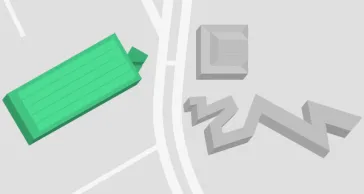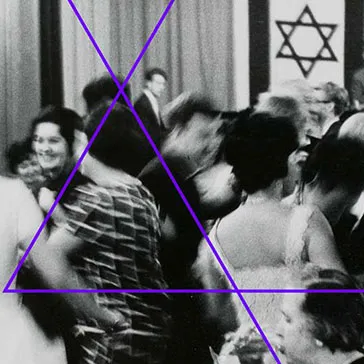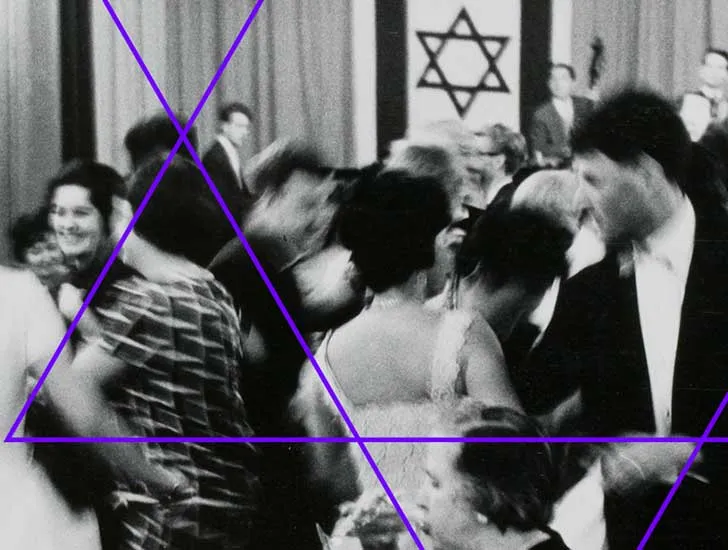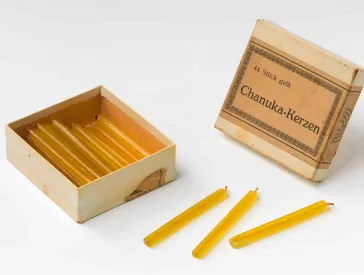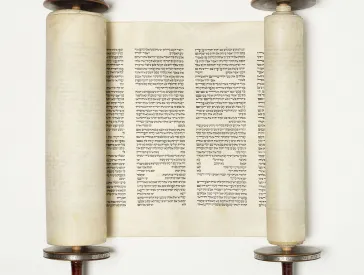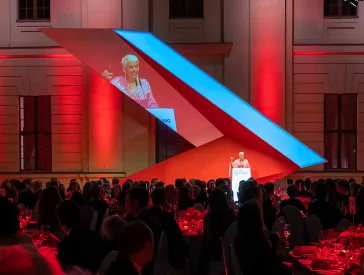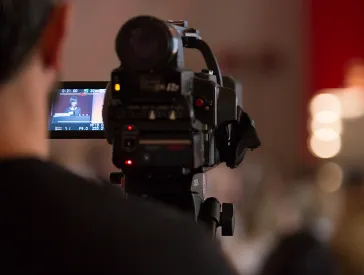To what extent does photography reproduce an authentic image of reality? That question has been debated many times. Even though photography can render its subjects with realism and apparent objectivity, the photographer’s perspective itself always makes its subjectivity clear. It is up to the photographer to choose when, where, and how the things they see appear in a photograph.
On this point, Leonard Freed said, and I quote: “What you see in the pictures is what I wanted to show.”
He did not describe himself as a journalist interested in hard facts, but as a writer, comparing his photographs to poems whose meanings are often open to many layers of interpretation.
Born and raised in 1929 in Brooklyn, New York, Leonard Freed traveled around Europe from an early age and later visited many places around the world. At first, he wanted to become a painter, but after studying graphic design, he opted for photography instead. His camera became his constant companion, helping him process his experiences and understand the world better. He was drawn to long-term studies that touched him and occupied him for years, often on socially critical themes such as war, racism, crime, ageing, or homelessness.
Also, as the child of Jewish immigrants from Eastern Europe, he often turned his lens to his fellow Jews. Early in his career, he photographed the Orthodox Jewish community in Williamsburg. In 1958, he started work on an extensive series about Jews in Amsterdam, and from 1961 he continued his observations in West Germany, especially in the regions around Frankfurt and Düsseldorf. His aim was to raise the visibility of the Jewish minority and thus counter German ignorance.
Over and over he witnessed Germans’ unwillingness to face their recent past. At the same time, he used his camera to probe his own Jewish identity. In his own words, “My need to understand and analyze my relationship to Jewishness, along with other questions that baffle me, led me to photography.”
His pictures are simultaneously skeptical and hopeful. He captures what matters to him: unstaged, mundane, and sensitive, and always deeply connected to the people in the frame.
Even his photographs of well-known figures are anything but conventional portraits. Here, too, he captures situations and moods, usually in close-up shots of isolated moments. Each image stands on its own, yet the images come together to form a complex whole.
Clear-cut classifications were not his way. Imperfect images, for him, were more perfect. He always saw things from multiple perspectives.
Out of several thousand photographs, Leonard Freed selected 52 images for the book he published in 1965 under the title Deutsche Juden heute (German Jews Today). The book was designed by renowned designer Willy Fleckhaus.
Alongside Freed, the book was co-edited by Hermann Köper. Essays by Hermann Kesten, Ludwig Marcuse, Robert Neumann, and Alphons Silbermann complemented the photographs with striking texts. For each image, Freed wrote his own captions, some of them quite detailed.
The sequence of photographs was also deliberate. The very first image depicts marble busts along a wall of the old Jewish cemetery in Frankfurt am Main. The identities of their subjects are unknown. The second photograph shows the Jewish cemetery in Worms, one of the oldest in Europe. Both images highlight the long tradition of Judaism in Germany and the profound rupture the Holocaust represented. The first section also includes three images with direct references to Nazi atrocities: The first shows a woman’s arm tattooed with a concentration camp number from Auschwitz. In an otherwise idyllic scene set on a riverboat, Freed places the tattoo in the center of the image. The second shows a prayer book containing photographs of murdered family members; and the third bears the title Wooden grating over the blood trenches in the former concentration camp at Dachau.
Finally, Freed turns his lens to young people, children and teenagers. This conclusion to the book, with its largely open-ended and optimistic images, reinforces the photographer’s hopeful outlook. Freed’s photos are marked by empathy, sensitivity, and seriousness but also have humorous touches.
The Holocaust was less than twenty years in the past. West Germany’s Jewish communities were few and small, with around 25,000 Jews residing in the country altogether. Their presence in the “land of the perpetrators” could not be taken for granted. Most were there for lack of other options, living with “packed suitcases,” as the saying went. Observers abroad were also perplexed by their decision to live in Germany, and antisemitism was still mainstream.
The process of reckoning with the legacy of Nazism was only getting started, and at a snail’s pace. After the 1961 Eichmann trial in Jerusalem, two more years went by before the second Auschwitz trials began in Frankfurt. Israel did not establish diplomatic relations with West Germany until 1965. That year, the Bundestag debated whether the statute of limitations for Nazi crimes had expired. Many Germans wished to “draw a line” under the past. In 1966, the World Jewish Congress held a special discussion in Brussels titled Deutsche und Juden – ein ungelöstes Problem (Germans and Jews: A Problem Unresolved). Such an event would have been unthinkable then in Germany, as Thomas Sparr will speak about in a moment.
It is worth taking a closer look at the different people depicted in Freed’s photographs, and thinking about their wide range of life stories and experiences. We are taking this exhibition as an opportunity to research these different life stories, and we are continually finding new information, which we publish on our website as we learn it.
Allow me to briefly introduce some of them. Their biographies also reveal the varied reasons why they found themselves in Germany, and help to add nuance and shed light on the situation of Jews in Germany in the 1960s from various perspectives.
In 1962, Freed photographed Hugo Spiegel. He was a cattle dealer from a traditional Jewish family that had lived for centuries in the town of Warendorf, in Westphalia. After the pogrom of November 1938, he fled with his family to Brussels.
In 1940, he was arrested and deported. His wife and son survived in hiding and reunited with him there later. His daughter Rosa was murdered in Auschwitz. His son Paul Spiegel, who was President of the Central Council of Jews in Germany from 2000 to 2006, later wrote about his father in his autobiography, and I quote: “My father was announced champion shot in 1962 at Warendorf’s ‘Hinter den Drei Brücken’ shooting club. This was no doubt a symbolic occasion. It was the first time that a Jew had been made champion shot in Warendorf, in Münsterland, or even in Germany.”
He continued: “He was a worthy champion – but not an unmindful one. When we… were finally alone, he, who never talked about the past, said… See, it was right to come home to Warendorf!’ and then added, almost inaudibly: ‘If only our little Rosel could have lived to see this.’”
.
Another of Freed’s photographs shows a young girl on her grandfather’s lap during a bar mitzvah celebration in Düsseldorf in 1961. Her father is pictured in one of the other photos: Alfred Israel, born in Leipzig in 1922. He survived several concentration camps and, like Hugo Spiegel, returned to his hometown of Leipzig after 1945. After the founding of East Germany, he fled to West Berlin. Hoping to emigrate to the United States, he instead ended up in Düsseldorf, where he remained.
In the final chapter of the book, focusing on young people, Freed photographed this young couple on the Rhine promenade in Düsseldorf in 1961, in a tender pose: Ruth and Herbert Rubinstein. They met at a Hanukkah ball and married in 1964. Today they have three children, four grandchildren, and two great-grandchildren.
They had very different life journeys before they met. Herbert Rubinstein was born in 1936 in the city of Czernowitz, which was then in Romania and is now Chernivtsi, Ukraine. His father was murdered, but he and his mother survived. After the war they spent some time in Amsterdam before coming to Düsseldorf.
Ruth Rubinstein was born in Tel Aviv in 1942. At age fifteen, she left Israel with her parents and sister. For health reasons, her father decided to return with the family to his birthplace, Cologne. Ruth Rubinstein could not understand why they had to go to Germany of all places, and was unhappy about it for years.
The life of the young man shown here on the right, Robby Wachs, took a very different course. The picture shows him as a member of a youth group in Düsseldorf in 1961. He was born in 1947 in the Ziegenhain DP camp in Hesse, which was overseen by the American occupying forces. He described his parents’ attitude as follows: “No, it wasn’t to the land of the murderers, as my mother called Germany at the time, that my parents fled, but into the zone protected by the US Army. Moreover, they always saw it as just a short stopover, since their dream destination was Palestine – the Promised Land, Eretz Israel. All their hopes and efforts were bound up with that dream.”
Robby Wachs also wanted to leave Germany as quickly as possible. In 1967, during the Six-Day War, he traveled to Israel to enlist in the IDF. Afterwards, he returned briefly to Düsseldorf to complete secondary school, then went to Israel once and for all, where he still lives today. In contrast to Robby Wachs’s attitudes, the Düsseldorf Jewish Community pursued the goal of steady expansion. Robby Wachs recalled rejecting this objective at a meeting of the Community with the words, and I quote: “My mother did not give birth to me so that I would stay in Germany.”
In conclusion, I would like to return to Leonard Freed. Alongside Jewish subjects, from the early 1950s he also took photographs in Germany around other themes, which he later assembled in the 1970 book Made in Germany. Particularly noteworthy are the short texts at the end of the book, with the headings “Trauma 1” through “Trauma 4,” in which Freed recounted personal stories and experiences of prejudice and antisemitism. Later he wrote, and I quote: “I feel being born in the United States gives me a fresh or extra eye to observe what the average German will overlook.”
This is undoubtedly true of the pictures he took in the 1960s for the German Jews Today series.
And now, please join me in welcoming Thomas Sparr.
